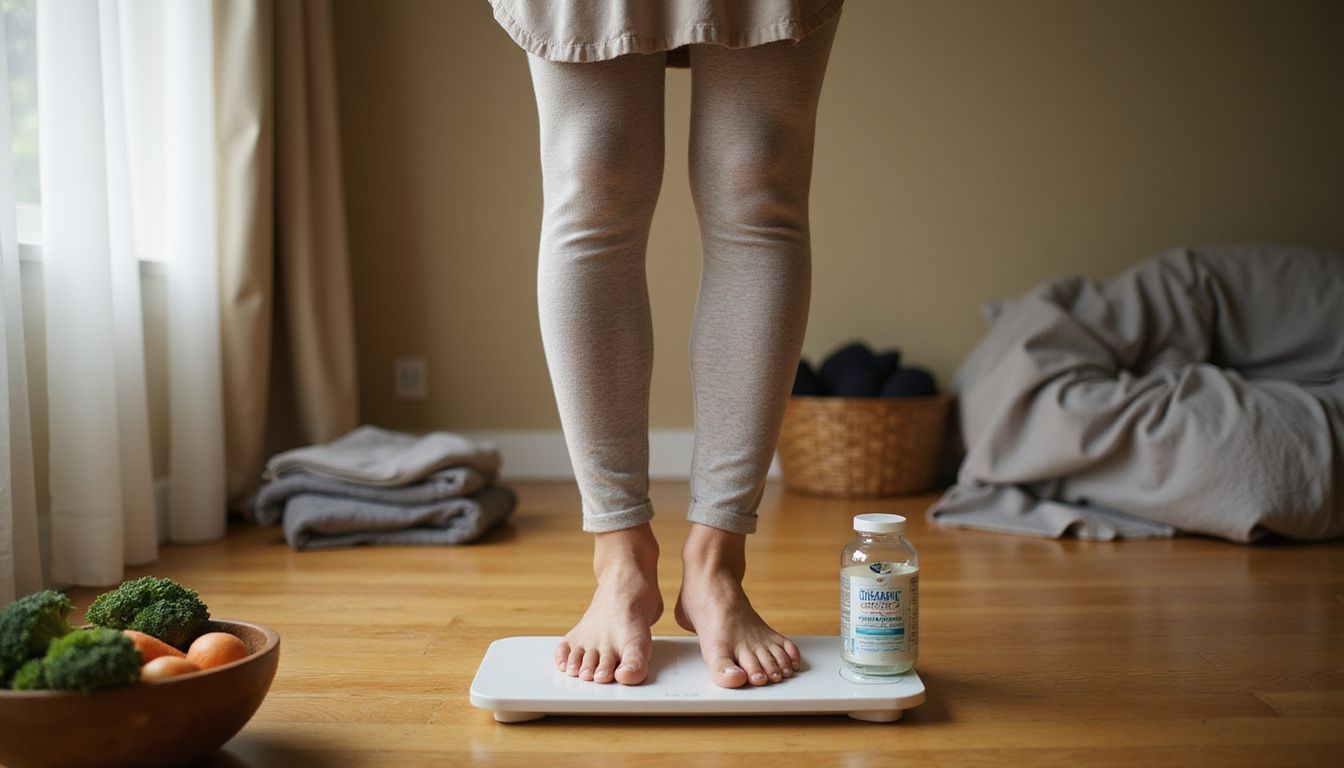Oprah Weight Loss Journey: How Oprah Winfrey Beat Obesity With Ozempic
Our Nutrition Assistant AI Suite will transform your body. You will lose fat, get toned, and build muscle. Gain confidence and optimal health.
If weight loss feels hard, you are not alone. Oprah Winfrey shared how she lost 42 pounds using a steady plan that mixed healthy food, daily movement, and a prescription medicine called Ozempic, which contains semaglutide. Her experience shows how medical care, smart habits, and support can work together.
In this guide, you will see the steps that helped her, plus ideas you can adapt. Learn how Oprah adjusted exercise after knee surgery, used a GLP-1 medication to manage appetite, and rebuilt confidence. If you want to understand what truly moved the needle in Oprah’s weight loss, keep reading.
Key Takeaways
- Oprah Winfrey lost about 42 pounds with a balanced diet, regular activity, and semaglutide, a GLP-1 medicine sold as Ozempic, which helped reduce cravings.
- Data published in NEJM in 2021 found that people using semaglutide lost up to about 15 percent of body weight over 68 weeks (Wilding JP et al., 2021).
- After knee surgery in 2021, Oprah built daily movement and physical therapy into her routine, which improved strength and supported lasting results.
- Her openness about anti-obesity medication challenged stigma and reframed obesity as a complex disease that may need medical treatment.
- Experts recommend personalized plans that pair medications with mindful eating and activity for safer, more durable weight management.

What was Oprah’s weight loss journey like?

Oprah’s struggle with obesity played out in public during her years as a talk show host. Many recall the 1988 “wagon of fat” episode, which showed how hard it was to lose weight and keep it off.
She tried many approaches over the years, including a liquid diet, strength training, WW International, and mindful eating. At times she lost a large amount, including 67 pounds, but maintenance was the challenge.
Oprah also talked openly about shame, blame, and the idea that willpower alone should fix weight. That pressure can wear people down. After knee surgery in 2021, she rebuilt her routine around movement and considered medical tools, including prescription GLP-1 therapy. Her candor helped many people see new options without guilt.
The Role of Ozempic in Oprah’s Transformation
Medication was one piece of her new plan, not the whole plan. Think of it as an assist that made healthy habits easier to repeat.
What is Ozempic?
Ozempic is a prescription medicine for type 2 diabetes. It contains semaglutide, a GLP-1 receptor agonist, which is a drug that mimics a gut hormone that rises after meals. The same molecule at a higher dose is also approved for chronic weight management as Wegovy.
These medicines help lower blood sugar and curb appetite. Ozempic is taken as a once-weekly injection under the skin of the abdomen, thigh, or upper arm. In clinical studies of semaglutide for weight management, participants lost around 15 percent of body weight over 68 weeks1. That made it one of the most effective GLP-1 options studied at the time.
Ozempic helped me reduce my cravings and finally lose the stubborn pounds, Oprah shared during her new special.
Doctors may prescribe this class of medication when diet and exercise alone have not been enough. Decisions should be made with a clinician who can review your health history.
How does Ozempic help with weight loss?
Semaglutide imitates GLP-1, a hormone that helps your brain feel full and slows how quickly your stomach empties. The result is fewer cravings and smaller portions without feeling as deprived.
- Signals the brain that you are satisfied, which lowers calorie intake.
- Slows digestion, so meals keep you full longer.
- Supports steady habits, such as sticking to a healthy diet.
Across trials, many people lost a significant amount of weight over time. Common side effects include nausea, diarrhea, vomiting, or constipation, especially early on. Talk with your doctor about risks and how to manage them.
The Turning Point: Oprah’s Knee Surgery
Recovery became the spark that helped her reset daily routines.
How did surgery kick-start her health journey?
Years of knee pain limited her movement. After surgery in 2021, her care team encouraged gradual activity to protect joint health. That advice turned into action.
Short physical therapy sessions grew into daily walks and later pool workouts. Progress came from small steps repeated often. This steady movement improved strength, mood, and metabolic health, which made weight control more manageable.
How did Oprah reconnect with exercise and physical activity?
Early on, she focused on gentle work like short walks to lessen stiffness. Over time, low-impact routines such as water exercise and yoga helped rebuild flexibility and confidence.
Movement became more than burning calories. It supported mental health and a dependable daily rhythm. A simple example is a 20-minute walk after dinner to aid digestion and reduce evening snacking.
Oprah’s Approach to Diet and Nutrition
Food choices shifted from restriction to a plan that fuels the body and feels livable.
What is counting points and mindful eating?
Counting points assigns a simple value to foods, often based on calories, protein, and fiber. Programs like Weight Watchers use it to guide better choices without banning entire groups.
Mindful eating means paying attention to hunger and fullness cues. You slow down, notice flavors, and stop when you feel satisfied instead of stuffed.
Last year I tried both after reading about Oprah’s approach on Oprah Daily. Tracking points showed how quickly snack foods add up. Mindful eating slowed me down at dinner with my family in New York City, which improved portions without feeling strict.
Together, these habits support people who also use prescription weight loss medications like semaglutide. The focus stays on a balanced pattern instead of quick fixes.
How does Oprah embrace a balanced diet?
Her meals lean on lean protein, vegetables, fruit, and whole grains. A typical plate might include roasted chicken, greens, and a whole-grain side. Favorites are allowed in smaller portions.
Listening to hunger and fullness signals helps prevent overeating. This approach supports metabolic health and lowers long-term risks like cardiovascular disease. Keeping a simple food journal for a week can reveal patterns that are easy to adjust.
Oprah’s Reflections on Weight and Body Image
Shame and blame can trap people in cycles. Naming these pressures is a first step in breaking them.
How did Oprah feel “controlled” by food?
For years, cravings felt overpowering. Food could set the tone for her day. She described hunger as an hour-by-hour fight at times.
Stress or judgment often led to automatic eating. Even after losing 67 pounds, she still felt stuck in the same patterns. Understanding how appetite signals work guided her toward solutions like GLP-1 therapy, which better aligned biology with her goals.
What were Oprah’s experiences with weight stigma?
As a public figure, she faced constant comments about her body weight. The criticism affected her self-worth and sometimes overshadowed other health issues.
Even after weight loss, some people questioned the use of medicines like Ozempic or Mounjaro. Her story helped shift the conversation toward empathy and science, where seeking medical support is seen as a valid choice.
Benefits Oprah Experienced with Ozempic
Medication did not replace habits, it supported them and made change stick.
What weight loss results did Oprah achieve?
Reports show she lost about 42 pounds while using a plan that included a GLP-1 medication. The key was consistency. Weight came down, and she kept it off for months.
Her doctors also noted improvements in health markers such as blood pressure and cholesterol. Many fans watched her share these updates in an Oprah special, which opened the door to honest talk about obesity care.
How did Oprah’s energy levels and health improve?
With less joint stress and better fitness, daily movement felt easier. Climbing stairs and walking longer distances became possible without the same fatigue.
Balanced meals, mindful eating, and regular activity supported better mood and focus. These changes often go together. As weight drops, energy rises, which makes healthy choices simpler to repeat.
The Broader Impact of Oprah’s Journey
Her voice brought attention to newer treatments like Ozempic and tirzepatide, and to the harms of stigma.
How has Oprah inspired conversations about obesity and health?
Openness about her struggles helped people see obesity as a medical condition with many causes. Media coverage increased interest in how GLP-1 medicines work and who might benefit.
More people now ask informed questions about weight loss medications and long-term care. This shift supports kinder discussions at home and in clinics.
How does Oprah address the stigma of weight-loss medication?
She explains that taking medicine for obesity is not a shortcut, it is a treatment. GLP-1 drugs mimic natural hormones that help manage hunger and fullness.
That message encourages others to view medical support as one option in a complete care plan. With more understanding, there is less shame and more problem solving.
Things to Know About Ozempic
Understanding benefits and risks helps you and your clinician choose wisely.
What are the potential side effects of Ozempic?
Common side effects include nausea, diarrhea, vomiting, or constipation. Headache and fatigue can occur in some people during the first weeks.
Hair shedding has been reported by some users, although it is not a common listed effect. More serious risks are rare and may include pancreatitis. Low blood sugar can happen if combined with certain diabetes drugs. People with a history of pancreatitis or diabetic eye disease should discuss risks with a doctor before starting.
This information is educational, not medical advice. See a licensed clinician for guidance that fits your health history.
Who is a candidate for this medication?
Doctors may consider semaglutide for adults with obesity, or for adults who are overweight with related conditions such as type 2 diabetes, high blood pressure, or high cholesterol. It is not for people who are pregnant.
Your clinician will review your goals, medications, and medical history. Success improves when medicine is paired with nutrition support and regular activity.
Lessons Learned from Oprah’s Journey
The big idea is simple. Match tools to your needs and keep the plan livable.
Why are personalized health plans important?
Personalized plans account for your age, lifestyle, medical history, and past attempts at weight loss. What works for your friend might not work for you.
When a plan reflects your life, you stay motivated longer and can adjust as things change, such as during travel or after an injury. That flexibility protects progress.
How to balance medication, diet, and exercise?
Work with your healthcare team. Confirm dosing, monitor side effects, and schedule follow-ups.
- Plan simple meals built around protein, vegetables, fruit, and whole grains.
- Practice mindful eating, pause halfway through meals to check fullness.
- Choose low-impact activity you enjoy, for example brisk walking or swimming.
- Track a few basics each week, such as steps, sleep, and how you feel.
This steady approach supports safe weight loss and better long-term health.
Conclusion
Oprah Winfrey’s weight loss journey shows how medical care, semaglutide therapy, balanced nutrition, and regular movement can work together. Research supports the role of GLP-1 medications in helping people lower body weight while improving health markers1. Her honesty reduced shame and widened the conversation about obesity and care options.
If you are considering Ozempic or a similar treatment, talk with your doctor about risks, benefits, and fit. Build a plan you can live with, then let small steps compound over time. Progress may feel slow, yet those steps add up.
1 Wilding, John PH, et al. “Once-Weekly Semaglutide in Adults with Overweight or Obesity.” The New England Journal of Medicine, 2021.
FAQs
1. How did Oprah Winfrey achieve her weight loss goals with Ozempic?
Oprah Winfrey used Ozempic, a medication approved for type 2 diabetes, as part of her plan to address obesity. She combined this treatment with healthy eating and regular physical activity. This approach helped her lose weight when other methods had not worked.
2. Does taking Ozempic mean nothing else is needed for weight loss?
Weight loss does not happen from medicine alone. Oprah’s journey shows that using Ozempic works best alongside lifestyle changes such as balanced meals and exercise routines.
3. What evidence supports the use of Ozempic for people struggling with obesity?
Clinical studies show that people who take Ozempic often lose more weight than those who do not use it. For example, research published in The New England Journal of Medicine found significant reductions in body mass index among participants using this drug compared to placebo groups.
4. Did Oprah face challenges during her journey to beat obesity?
Yes, Oprah has shared that losing weight does not come easy even with support like medication or professional guidance. Her story highlights the importance of persistence and seeking help when needed on the path toward better health outcomes.
Summary:
Oprah Winfrey’s experience demonstrates that while medications like Ozempic can aid in fighting obesity, lasting results depend on combining medical treatment with healthy habits and ongoing commitment to wellness goals.







